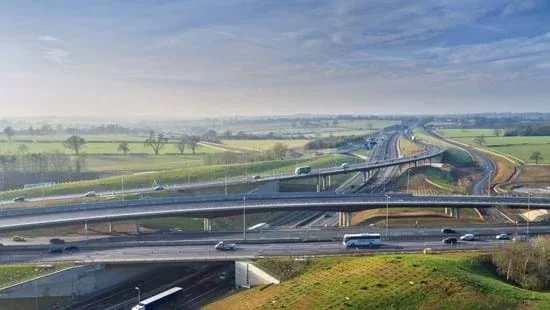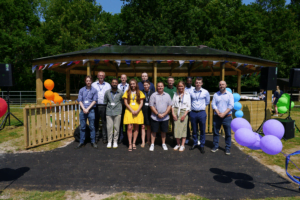More than 160,000 new trees are to be planted this year alongside the A14 between Cambridge and Huntingdon to replace hundreds of thousands that have died on the new stretch of road which has only recently open.
The announcement follows news two years ago that 866,000 trees from a range of native species would be planted “replacing the trees removed for the roadworks at a ratio of approximately two to one”.
As part of National Highways’s improvement project, 270 hectares of new habitat was created for wildlife, including the landscaping of roadside verges and transformation of borrow pits into a mixture of woodland, grassland, wetland and open water habitat. The team also built 24 wildlife tunnels, put up 360 bat boxes, 90 bird boxes, 24 swift boxes, 22 barn owl boxes and 24 kestrel boxes
Across the scheme, more than 860,000 trees were planted which included 40 different native tree and shrub species, replacing the trees removed at a ratio of two to one.
However, National Highways says it “became apparent” that “there was an unusually high failure rate among the planted trees”. National Highways has since conducted a survey, including analysing soil samples taken along the route, to better understand the reason behind the failure and to put a plan in place to correct the issue.
Using the learnings from the survey, National Highways has designed a revised replanting strategy, which includes a new preparation and planting aftercare programme.
Replanting is expected to begin in October with the first batch of 162,000 trees already on order from a local nursery. In addition, all replanting work will be subject to a five-year establishment period.
The news has been welcomed by local councillors on both Cambridgeshire County and South Cambridgeshire District Councils – who have worked hard to put forward local views and concerns on the need to improve biodiversity along the route
Cllr Alex Beckett, chair of Cambridgeshire County Council’s Highways and Transport Committee, said: “The level of dieback that we saw on the original planting in some areas has been a major concern for local residents and we have been working with National Highways to try to resolve this.
“We are pleased we now have a commitment from National Highways to replant 160,000 trees and to look after them for five years to ensure they become established. The county council will then take over the responsibility of 40,000 trees when the five-year establishment period ends.”
Cllr Edna Murphy, who represents Bar Hill on the council, added: ““I submitted a motion to Full Council last year calling on the County Council to engage with National Highways to ensure that we received information about tree die back, and that solutions were found to address the causes of this disastrous loss. I’m pleased that National Highways has committed to delivering on this important biodiversity initiative.”
South Cambridgeshire District Council’s Lead Cabinet Member for Environment, Cllr Brian Milnes, said: “Confirmation of this re-planting scheme is welcome news; residents were dismayed to see what happened with the initial round of planting. However disappointing the failure, we’re pleased that National Highways has carried out extensive investigations and have committed to rectify. It is especially important given that South Cambridgeshire has fewer trees than most other areas of the UK. As a Council we are committed to Doubling Nature and to enhancing the natural environment, so it’s good to see this re-planting scheme come to fruition.”
The new approach has also been welcomed by local county councillors Cllr Ros Hathorn and Firouz Thompson, who represent areas along the route. Both highlighted and championed the need for the five-year extension for responsibility for the planting scheme, with the support of local resident groups.
Martin Edwards, National Highways Project Manager, said: “We take our responsibility to the local environment seriously and with that in mind we’re pleased to be in a position where we have a clear route ahead for the replanting of trees on the A14 Cambridge to Huntingdon improvement scheme. This approach will result in planting the optimum species of tree, in the right areas, with tree planting set to begin in October.”
National Highways says autumn is the perfect time of year to plant, as the soil is still warm from the summer sun and moist from the autumn rains. The air temperature outside is cooler which means there’s no searing heat to scorch the plants either. The cooler temperatures mean the plant isn’t throwing all its energy into growth, but rather is moving to a dormant state to survive for next year.
It will take about 15 years for the plants to mature and fully realise our objectives of nature conservation and biodiversity, but wildlife will begin using the new landscape much sooner than that.
The £1.5 billion A14 Cambridge to Huntingdon scheme included a major new bypass to the south of Huntingdon and upgrades to 21 miles of the A14, has helped transform journeys in Cambridgeshire. Up to 20 minutes has been shaved off journeys and the scheme has also strengthened links between the Midlands and the East of England – vastly improving access to and from the UK’s largest container port at Felixstowe.
(Picture – gov.uk)





















